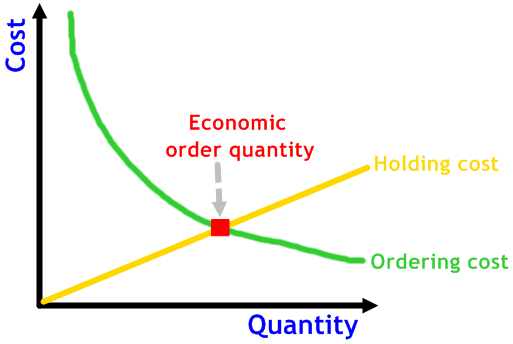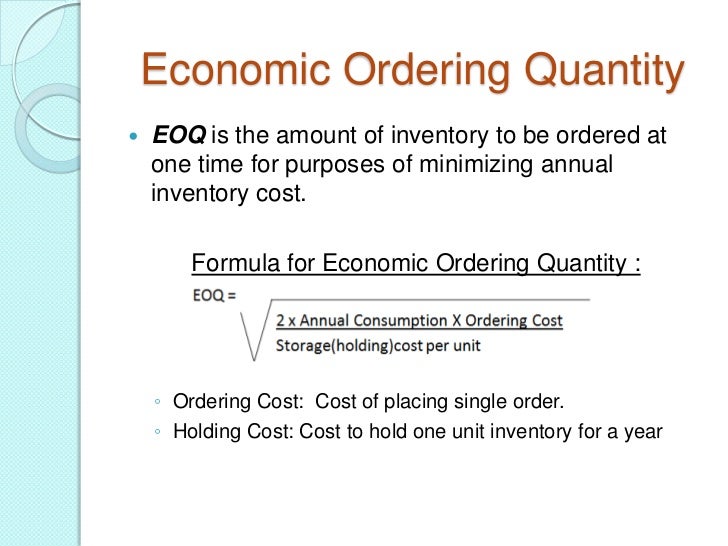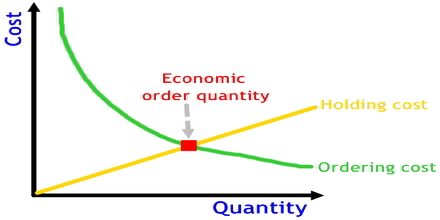

S = cost incurred to place a single order, reordering cost It is the most common method that company use to optimize the inventory cost to the minimum level. The total cost of inventory usually include holding cost, ordering cost and storage costs.
Economix order quantity software#
Businesses that frequently turn inventory will usually require dedicated software to help make dynamic purchasing decisions.Economic Order Quantity (EOQ) is the inventory level in which the company should place purchasing orders to minimize the cost of inventory. While this example presents the basics of EOQ, calculations in real-world applications tend to be more complex. √2DS/H = √(2 x 1000 bottles x $2) / ($3 holding cost) = 36.5 bottlesīy rounding off this figure, the ideal order size that the supermarket would need to make to meet consumer demand while minimizing inventory costs is 37 bottles. Additionally, assume that the cost of ordering a bottle of milk is $2. Since the milk must be kept in a refrigerator, it costs the company $3 per year to store the bottle in inventory. Suppose a supermarket sells 1,000 bottles of milk per year. This limitation makes it almost impossible to use the formula to account for unpredictable events, such as sudden changes in consumer demand, inventory price fluctuations, purchase discounts for bulk orders, and lost revenue due to inventory shortage. The drawback of using EOQ lies in its central assumption that demand, ordering costs, and holding costs are constant. By calculating the required number of EOQ units, companies can determine how much it should add to its current inventory with each batch order to meet consumer demands. The above formula is best used in situations where demand, ordering costs, and holding costs are constant with time. Holding costs refer to the expenses related to storing additional inventory on hand, such as warehousing, insurance, taxes, etc. Setup costs are the costs associated with ordering the inventory, including packaging, shipping, delivery, handling, etc. The demand rate is the amount of inventory that a company sells annually. Harris, the calculations for this production-scheduling tool have since been refined. While this inventory management model was first developed in 1913 by Ford W. In other words, the model ensures that companies do not store excess inventory and incur additional cost due to overly frequent orders.


The economic order quantity (EOQ) model is an inventory management method for calculating the ideal number of units a company should add to its inventory for a given production cost and consumer demand rate.ĮOQ achieves this by allowing managers to calculate the optimal quantities required to minimize holding and ordering costs. On the other hand, inventory shortage can result in an inability to meet customer demand, leading to reduced sales and profits.Įconomic Order Quantity (EOQ) is one of several lean inventory management techniques utilized to increase the efficiency with which inventory is handled. Mismanaged inventory can lead to a surplus of goods, causing financial losses due to additional storage costs, spoilage, taxes, insurance, and other issues.

Inventory is an essential asset in virtually all manufacturing and retail businesses but managing inventory can be a complex undertaking. Sign up here to get the day’s top stories delivered straight to your inbox. Welcome to Thomas Insights - every day, we publish the latest news and analysis to keep our readers up to date on what’s happening in industry.


 0 kommentar(er)
0 kommentar(er)
